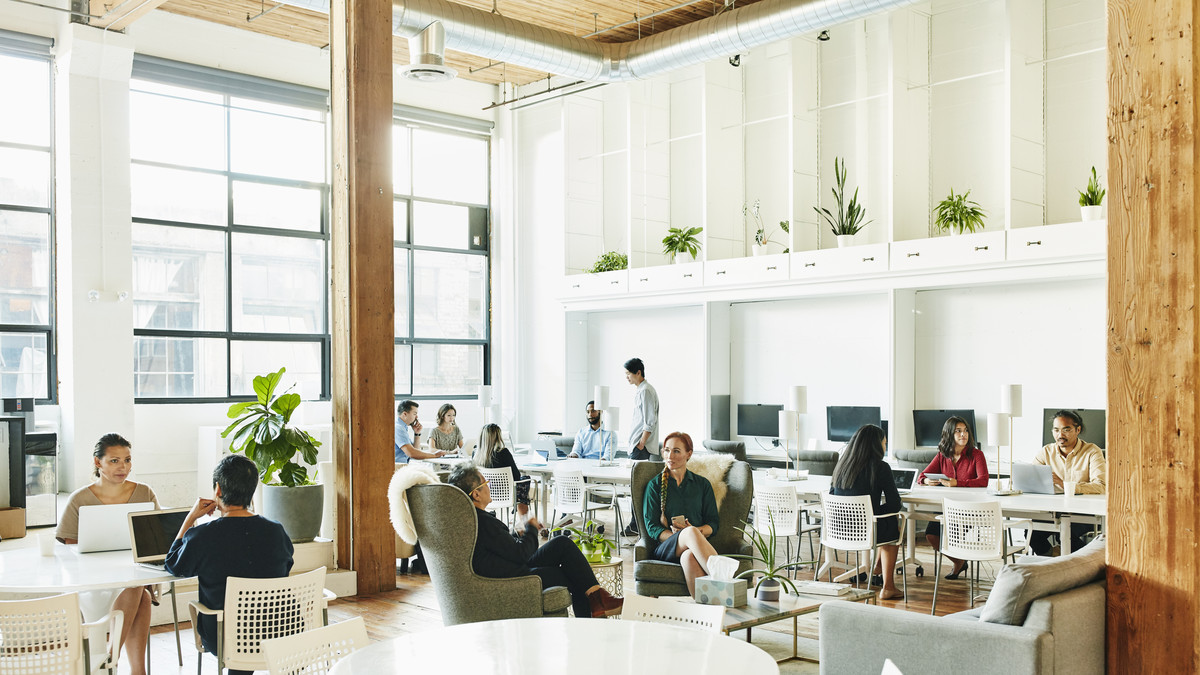As people tiptoe cautiously back to the office, some consensus is beginning to form around what the new workplace should look like.
Cubicle farms are out, “huddle rooms” and “telephone booths” are in.
Real estate owners are struggling to balance the space consolidation opportunities that remote work presents with the need to remain sensitive to employee experience during a period of unprecedented turnover.
“It’s the wild west right now,” said Brad Golden, customer success manager at VergeSense, which develops technology to help business leaders understand workplace utilization. “Many companies have a return-to-office policy but no idea how many people are returning and how space will be used.”
One of the tricky variables is that people have different reasons for returning, Golden said. “Some people want to come to the office for collaboration, social contact, and a sense of belonging while others want some kind of boundary from the home,” he said. “The purpose of the office has to be looked at differently.”
VergeSense’s technology helps business executives and building owners understand the usage and occupancy of buildings, floors, seating areas, conference rooms, and individual desks to continually tinker with layouts and amenities to match workers’ needs.
The company has seen strong interest in “phone booths,” which are movable, enclosed rooms designed for occupancy by one person that offers a sense of privacy even in the middle of large spaces.
Businesses are also adopting “neighborhoods,” which are multi-faceted workspaces containing booths, nooks, conference rooms, and seating areas designed to encourage collaboration.
“Employee experience is as important to overall business performance as consolidating real estate space,” Golden said. “Good design impacts employee experience.”
Coworking interest surges
In many cases, the office to which people return won’t be the one they left two years ago.
Interest in coworking facilities, which provide rented office space for individuals or small groups, has surged over the past two years. As a result, the number of facilities is expected to double from 20,000 in 2020 to 40,000 by 2024, according to Coworking Resources.
“We felt like coworking was the wave of the future in 2019, but we thought it was probably seven or eight years out,” said Michael White, president of Venture X, which operates about 50 coworking locations worldwide. “We are now where we thought we would be five years from now.”
Occupancy levels at every one of Venture X’s 50 facilities have eclipsed capacity, and the length of tenancy is also increasing, with many companies signing up for 12- or 24-month commitments, White said.
The trend is playing out everywhere.
“Some countries are further along than we are; England embraced this model a year ahead of us,” he said.
He said that one factor driving the trend is the quest for shorter commute times.
“People in suburban markets used to be willing to drive 20 to 25 minutes to work. Now it’s 10 to 15 minutes,” White said.
In addition, as tenant profiles have shifted from mostly entrepreneurs to a growing number of corporate satellite offices, Venture X has been investing in expanded conference rooms and technology to support large meetings. “In 2019, no one paid much attention to that,” he said.
Workplace awareness
Whatever the new normal office looks like, you can be sure mobile apps will be part of it.
Schneider Electric, which makes a wide range of environmental control products, used lessons learned from the pandemic to develop an app that integrates building data into a health and safety dashboard for employees. Built on Modo Labs‘ low-code platform, the EcoStruxure Engage app sends alerts when capacity thresholds are crossed and provides guided parking instructions, individual comfort controls, dining options, and in-app communications.
Cloud identity management firm Okta also used Modo Labs’ toolset to build Atmosphere, a “digital concierge” app for its return to the office and released it as a free download.
Users can use it to book conference rooms, locate amenities, reserve smart lockers and report workplace issues while getting real-time updates on events and coworker schedules.
Wayleadr is tackling the frustration of trying to find a parking space, a task that costs the average suburban car owner 17 hours per year and 107 hours for New York City residents.
Its software enables businesses to optimize the use of parking spaces by forecasting occupancy, allowing spots to be reserved, and releasing assigned spaces when people are out of the office.
The startup claims it can improve parking lot space efficiency by 40% while all but eliminating one of the most aggravating parts of many people’s commutes.
All of this shows that as aggravating as the past two years have been, some good comes from the experience.
This article was written by Paul Gillin from Computerworld and was legally licensed through the Industry Dive Content Marketplace. Please direct all licensing questions to legal@industrydive.com.
